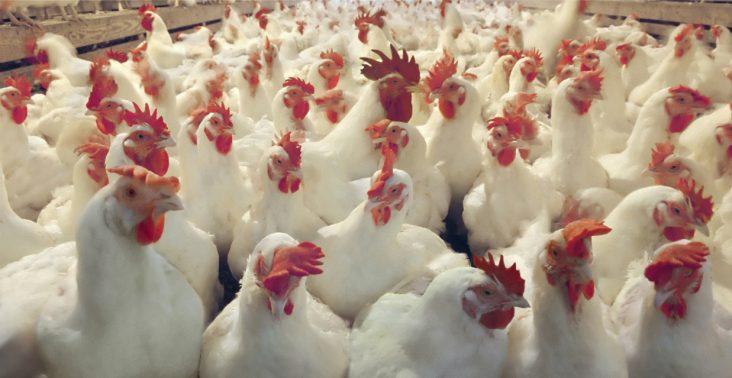Poultry production increased in Arkansas during 2023
by December 18, 2023 12:34 pm 1,021 views

Poultry producers and consumers experienced myriad problems in 2022 that led to higher prices and shortages in some instances. This year much of the market stabilized and it led to lower prices for consumers.
Jada Thompson, assistant professor of agricultural economics and agribusiness for the University of Arkansas System Division of Agriculture, said 2023 brought some relief to poultry producers, even while noting some difficulties.
“Producers had an easing of highly pathogenic avian influenza outbreaks across the United States compared to 2022,” Thompson said. “We had strong bird placements, but broiler slaughter went down slightly. The plant closures across the United States reduced the slaughter capacity. However, across the year, overall poultry production was up compared to last year, with a slight dip in that trend in the fourth quarter.”
The HPAI outbreak that began last year has become the worst outbreak of the deadly virus in the United States. As of Dec. 14, HPAI affected 426 commercial flocks, 586 backyard flocks and more than 72.5 million birds, according to the U.S. Department of Agriculture’s Animal and Plant Health Inspection Service.
The first case of avian influenza detected in Arkansas this year was reported in a chicken flock in Madison County on Oct. 31. Since then, three more commercial flocks have reported positive for HPAI: two flocks in Carroll County and one in Johnson County. In Arkansas, 255,100 commercial birds were affected in 2023, compared to 56,000 in 2022.
Thompson said that broiler production had a strong start to the year but experienced a slowdown in August, in part because of plant closures.
“This is likely driven by changes in production capacity, shifting technology demands of the industry and continued HPAI pressures affecting domestic and international markets,” she said.
Thompson noted that in spite of these pressures, prices were down compared to 2022.
“This was driven by increased supply,” Thompson said. “While HPAI still affected flocks across the country, the number of farms affected was substantially lower than last year, meaning supplies were able to recover.
“For example, egg prices were up by 145% in 2022 but are down 29% in 2023, year-over-year,” she said. “We saw good recovery in supplies, placements, hatching and sales for eggs. We rounded out the year in a much healthier place.
“We are seeing similar impacts in broiler and turkey prices as well,” she said.
Thompson said that turkey supplies are up and that helped bring prices down in time for the holiday season.
“2022 was a hard year due to HPAI and inflationary pressures. Good supplies led into the 2023 holiday season, making Thanksgiving dinner more affordable this year,” Thompson said.
Arkansas is third in national ranking of turkey production, according to the USDA’s Turkeys raised report. The Natural State has produced 27.5 million turkeys this year, a 6% increase when compared to last year. Overall, 219 million turkeys were raised in the U.S. this year, a 4% increase.
Thompson said that poultry processing plant closures negatively affected growers in 2023.
“This impacted producers that were under contract, those that wanted to go under contract, as well as plant labor and customers,” Thompson said. “These plants weren’t operating at full capacity, but they were a source of income for Arkansans.”
She explained that many growers were able to get a new contract, but some were not so fortunate.
“There were some grower contracts that were bought out and had to look for a different integrator or get out of the poultry business,” Thompson said. “This impacts farm lenders and local communities.
“We are still seeing strong production numbers for Arkansas and should continue to be a national leader for broiler production,” she said.
